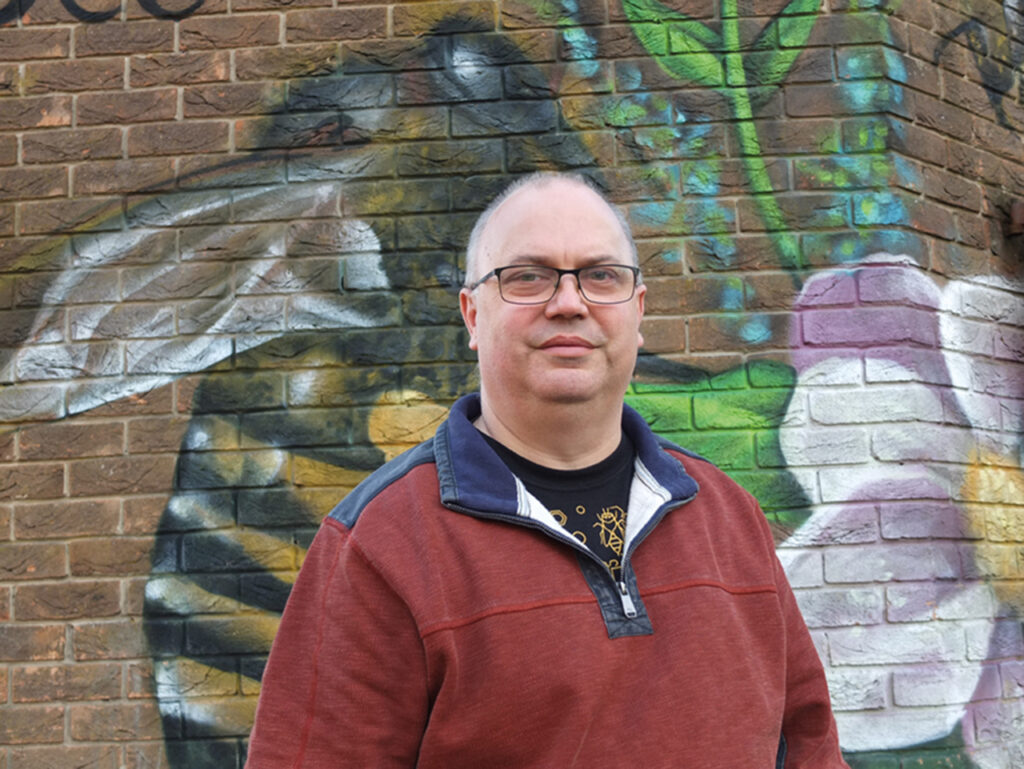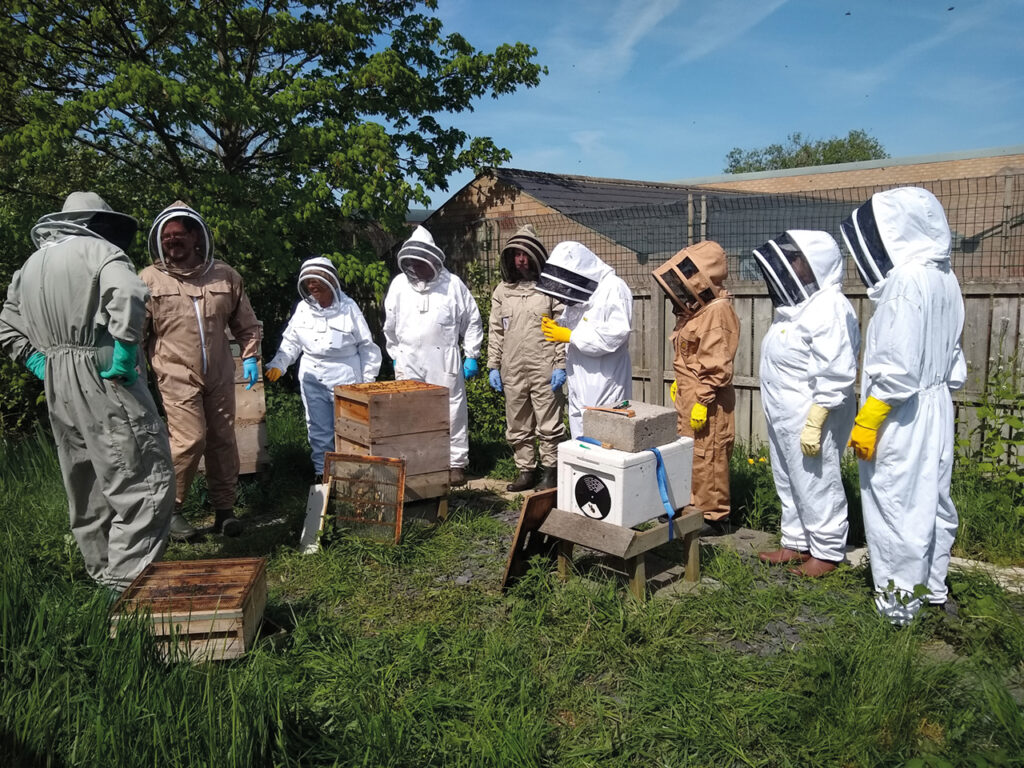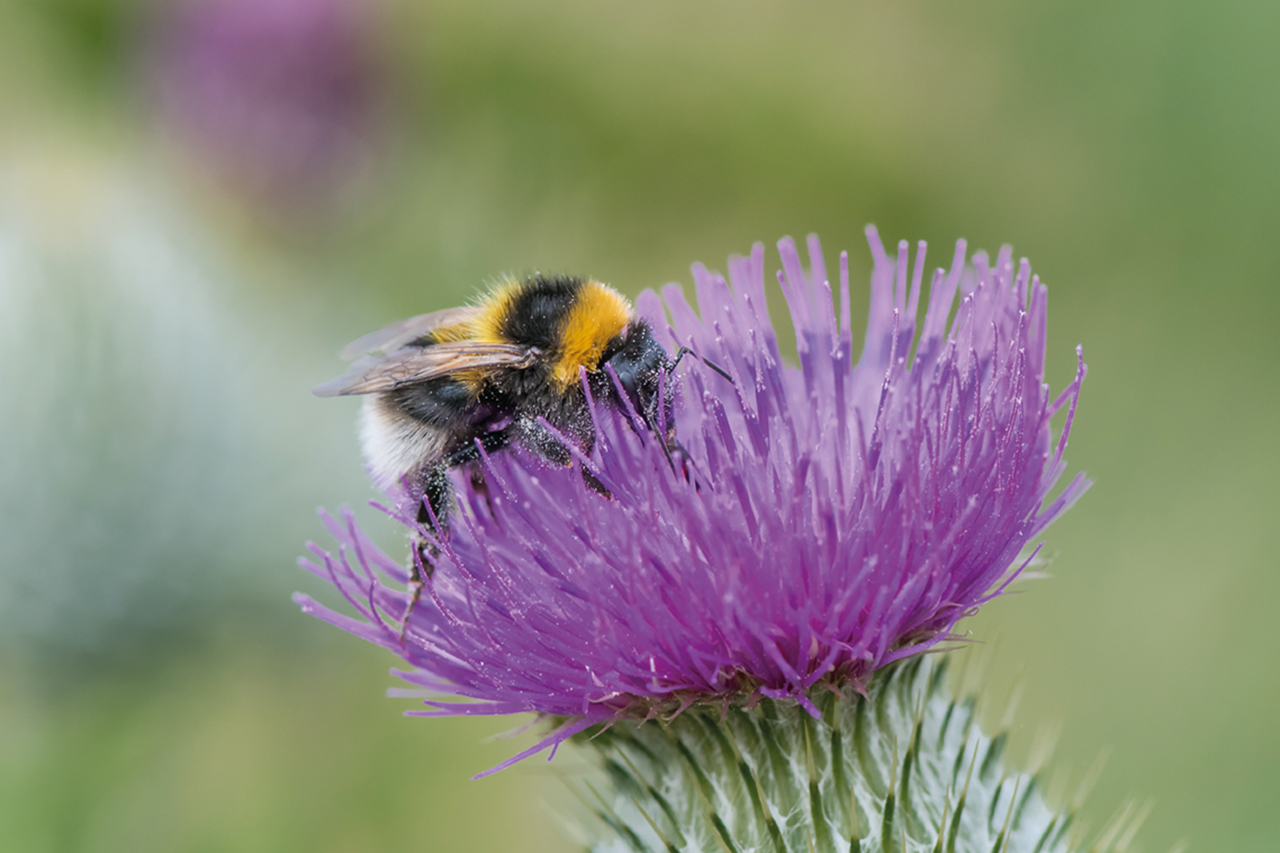More than just a buzz
Although beekeeping grew in popularity during lockdowns, looking after hives is a difficult undertaking and many people go wrong
Beekeepers tend to be a little eccentric. At least, that’s the belief of beekeeper Ian Campbell.
“If you’re regularly sticking your head into a box of 50,000 stinging insects, you’re probably not the most normal person in the world. But I do think the profile of beekeeping has diversified hugely in recent years,” says the enthusiast who began his own beekeeping ventures in 2009.
What started out as a small hobby has become a way of life. He now looks after 40 hives and mentors burgeoning beekeepers as chair of the Newcastle and District Beekeepers Association.
“When I began, beekeeping had really fallen to a low level in the UK, but it’s had a bit of a resurgence,” says Campbell.
“Perhaps that’s due to lockdowns, when people had more time and space to appreciate nature and look at it differently. Also, we’re all becoming more aware of the bigger global issues, and bees are a real canary in the coal mine for environmental issues.”
There is also a certain romanticism in generating your own produce, one perpetuated by the likes of Jamie Oliver and David Beckham, household names who are keen to show off the end product on social media but not the hard graft that’s required behind the scenes.
The reality is beekeeping is a big commitment.
“I think most people have an image in their head of what a beekeeper does, but until you’ve done a little bit of basic practical and theory training, you’re never quite sure what you’re letting yourself in for,” says Campbell.
Admirable as it is that people want to do their bit for these pollinators, and maybe make some honey along the way, there’s often very little forethought.
“It’s very easy to go click, click, click on the internet and order yourself all the bees and equipment you need and start up. But the failure rate of people is high because they just haven’t built the foundations of what they need and things can go wrong quite quickly,” notes Campbell.
“It’s a commitment, just like all livestock is a commitment to look after. You need to give the bees adequate space, make sure they’re well-fed and nourished and there are no signs of swarming, especially in urban areas, pests or disease, and be flexible and adaptable.
“You may have a plan for the bees, but each colony has its own personality. Some colonies are lovely, gentle, friendly, and virtually smile at you when you take the lid off. Other colonies are right evil little buggers.”
There are certain times of the year, especially in the summer, when you really can’t take a holiday if you’re managing bees, or you’ll need somebody who can step up, as a hive needs to be inspected every five to seven days.
“Each of the boxes is separated into a series of wooden frames where the bees create a wax comb. That’s where they raise their young and they store their honey. So, every week you’re going through those frames and doing diagnostics in your head of the state of this colony. What we try and do as a beekeeping association is offer people practical and theoretical training and support, so they stand a fighting chance,” says Campbell.

It’s not a cheap hobby. Start-up costs are typically at least £500 for a hive and equipment, which can swiftly multiply. The reality is unless you’re an actual bee farmer, beekeeping should be regarded as a passion, not a source of income.
“There are a few bee farmers in the UK,” says Campbell. “One of the biggest is a guy called Willie Robson at Chain Bridge Honey Farm up in Berwick. He runs about 2,000 colonies over a big area around the Scottish Borders and makes a living out of it, but he runs it as a tight family business.
“Your average hobby beekeepers might be able to make some money from selling their colonies or making a little bit of honey, but you’re never going to do much more than cover your costs.”
The main reason for that is the unlevel playing field in honey production across the globe.
“Honey is quite a complex product, and hard to identify and define because it varies all around the world, and there is a lot of food fraud out there. Some countries, especially China, have got very good at adulterating it with rice and corn syrups and harvesting unripe nectar and dehydrating it, and then flooding the international market with a low quality, fake product that’s difficult to prove as fake,” says Campbell.
“When you’re getting 340g jars of honey in the supermarket for 72p, you have to start asking some very serious questions about how authentic it can possibly be. Really, you should be thinking in the region of £10 a pound [a 454g jar]. At that price, a beekeeper could just about commercially survive, but it’s an extremely tough market.”
But for all its challenges, he finds beekeeping fascinating.
“You’re learning interdisciplinary skills that cover science, ecology and evolution to achieve a greater understanding as to their behaviour and biology.”
Take the waggle dance, discovered by the Austrian scientist Karl von Frisch in 1945, in which bees communicate the distance and direction to a food source by performing a figure of eight dance when they return to the hive.
“It’s just incredible for something that’s got a brain the size of a sesame seed. It’s why people get hooked on it. These hives are like a collective super-organism that’s self-managing, self-regulating and about absolute survival.”
If beekeeping feels too big a burden, you can still do your bit by looking after the wild bumblebee, which involves minimal to zero effort. You’d be helping a creature that likes to do more than survive and actually enjoys playing, according to research published last month. Scientists from Queen Mary University in London found they liked to roll wooden balls despite having no apparent reason to do so, with the younger ones joining in the fun more than older bees.
“This time of year, many gardeners think about doing an autumn tidy-up in their garden but if you can, don’t be too tidy. All sorts of wildlife benefit from a slightly wilder environment, but with regards to bumblebees, the queens will be looking to hibernate over winter. They’ll often dig down into the soil or fallen leaves so, if you can, leave dedicated areas of leaf litter and sheltered corners for them,” says Chloe Headdon of the Bumblebee Conservation Trust.
The trust works to raise awareness of the bumblebee’s plight and manages initiatives such as the national monitoring scheme BeeWalk and Bee the Change, an online campaign Headdon runs that provides the public with simple, practical tips on how to help.
“There are many, different kinds of pollinators in the UK, but bumblebees are particularly important because they have what we like to call significant pollination power due to their range of tongue lengths depending on species – some are long, some short,” says Headdon. “As a collective group, bumblebees tend to visit and help pollinate a wider range of flowers than honeybees, which have shorter tongues and are restricted to flatter, more open-shaped flowers. It’s why without bumblebees, our countryside would be less beautiful and varied.”
Bumblebees are also important in terms of food production, helping to pollinate fruit and vegetable crops, including tomatoes, blueberries, strawberries, pumpkins and courgettes. Without them and, to a smaller degree, other pollinators such as birds, butterflies and bats, there would be less variety.
The food that was produced would also be more expensive as they effectively provide a free pollination service. It’s estimated that if we were to hand-pollinate crops in the UK, it would cost over a billion pounds per year to the UK economy.
“We’ve currently got 24 species of bumblebee in the UK, but their story over the past century has been one of decline, and two have already become extinct. The biggest challenge has been large-scale habitat loss as a result of changes in farming practices and increased urbanisation. Obviously, climate change is playing a role, too,” says Headdon.
She stresses the simplest things we can do are provide food, somewhere to nest and allow queen bumblebees to hibernate without interference during the colder months.
“When the queens emerge in spring, they’ll be on their own and starving. The ultimate purpose for bumblebees is to produce new queens, so it’s important they can quickly gather their strength in order to establish their own nests and thrive,” she adds.
“Wildflowers like dandelions, which people often think of as weeds, are really important sources of pollen and nectar, as are crocuses and pussy willow. But every food source makes a difference, even if it’s a flowerpot or a window box on a high-rise building. It is very much a case of if you build it, they will come.”

Get some practical training under your belt, whether that’s with a community outreach group or via a taster day.
Read up as much you can. There are some great beekeeping books, such as the Haynes Bee Manual, which is comprehensive and well-illustrated.
If you decide to go ahead, buy bees locally, so they will be adapted to the shorter summers in the North. We’re also fortunate not to have any of the major bee diseases prevalent in other parts of the country.
(Source: Ian Campbell)
Why pollinator conservation matters
“Recent studies across Europe have found that insect biomass – total weight of insects – has declined by up to 75 per cent,” says Brittany Clarke, marketing and communications manager at Pollenize, a pollinator conservation and beekeeping organisation.
“This change has been driven by factors such as habitat destruction through agriculture and urbanisation, widespread pesticide use and climate change.
“The loss of insects has far-reaching consequences for entire ecosystems. Insects provide a food source for many small mammals, birds, amphibians, bats and reptiles, while plants rely on insects for pollination.
“Actions such as wildlife-friendly farming and gardening can have a positive impact on pollinators.
“In an urban environment, providing a wide range of native flowering plants which are free from harmful chemicals is the best way to ensure pollinators have plenty of available food sources.
“By designating a small section of our outside spaces to grow wild, we can create safe habitats for wildlife. Even something as small as a window box can provide immense benefits for local biodiversity.”
How to help save the bumblebee
Don’t be too tidy. Let your grass grow and get involved with initiatives such as No Mow May run by Plantlife to allow wildflowers like dandelion and clover to bloom.
Plant pollen and nectar-rich plants wherever you can. Crocus bulbs, winter honeysuckle, pussy willow and mahonia are all fantastic sources in the winter months and into early spring.
Create safe hibernation spots by making log piles (and leaving them alone), leaving dedicated areas of leaf litter, building an open compost heap or raised bed and leaving untidy “wild” areas with longer grass and moss.
Don’t strim hedge banks where there are old rodent burrows as bumblebees may re-use the holes as nests in spring.
Spread the word among friends and family about why bees are key to biodiversity.
(Source: bumblebeeconservation.org/beethechange)

Leave a reply
Your email address will not be published.